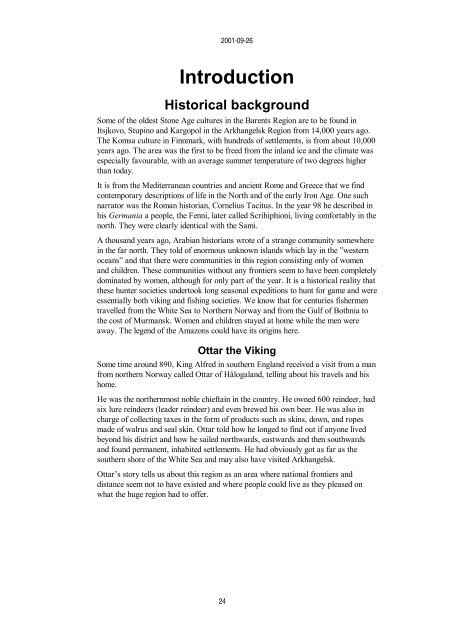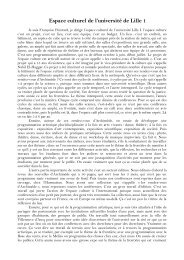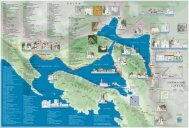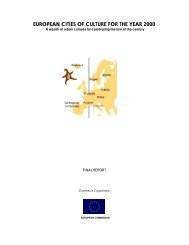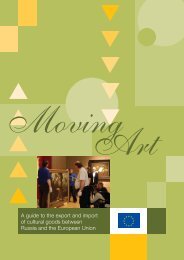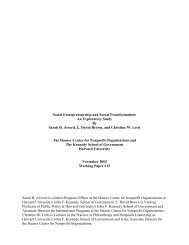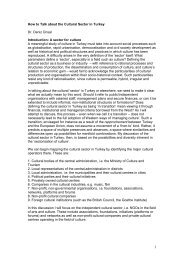Report on The Barents Cultural Co-operation - LabforCulture.org
Report on The Barents Cultural Co-operation - LabforCulture.org
Report on The Barents Cultural Co-operation - LabforCulture.org
Create successful ePaper yourself
Turn your PDF publications into a flip-book with our unique Google optimized e-Paper software.
2001-09-26<br />
Introducti<strong>on</strong><br />
Historical background<br />
Some of the oldest St<strong>on</strong>e Age cultures in the <strong>Barents</strong> Regi<strong>on</strong> are to be found in<br />
Itsjkovo, Stupino and Kargopol in the Arkhangelsk Regi<strong>on</strong> from 14,000 years ago.<br />
<strong>The</strong> Komsa culture in Finnmark, with hundreds of settlements, is from about 10,000<br />
years ago. <strong>The</strong> area was the first to be freed from the inland ice and the climate was<br />
especially favourable, with an average summer temperature of two degrees higher<br />
than today.<br />
It is from the Mediterranean countries and ancient Rome and Greece that we find<br />
c<strong>on</strong>temporary descripti<strong>on</strong>s of life in the North and of the early Ir<strong>on</strong> Age. One such<br />
narrator was the Roman historian, <strong>Co</strong>rnelius Tacitus. In the year 98 he described in<br />
his Germania a people, the Fenni, later called Scrihiphi<strong>on</strong>i, living comfortably in the<br />
north. <strong>The</strong>y were clearly identical with the Sami.<br />
A thousand years ago, Arabian historians wrote of a strange community somewhere<br />
in the far north. <strong>The</strong>y told of enormous unknown islands which lay in the ”western<br />
oceans” and that there were communities in this regi<strong>on</strong> c<strong>on</strong>sisting <strong>on</strong>ly of women<br />
and children. <strong>The</strong>se communities without any fr<strong>on</strong>tiers seem to have been completely<br />
dominated by women, although for <strong>on</strong>ly part of the year. It is a historical reality that<br />
these hunter societies undertook l<strong>on</strong>g seas<strong>on</strong>al expediti<strong>on</strong>s to hunt for game and were<br />
essentially both viking and fishing societies. We know that for centuries fishermen<br />
travelled from the White Sea to Northern Norway and from the Gulf of Bothnia to<br />
the cost of Murmansk. Women and children stayed at home while the men were<br />
away. <strong>The</strong> legend of the Amaz<strong>on</strong>s could have its origins here.<br />
Ottar the Viking<br />
Some time around 890, King Alfred in southern England received a visit from a man<br />
from northern Norway called Ottar of Hålogaland, telling about his travels and his<br />
home.<br />
He was the northernmost noble chieftain in the country. He owned 600 reindeer, had<br />
six lure reindeers (leader reindeer) and even brewed his own beer. He was also in<br />
charge of collecting taxes in the form of products such as skins, down, and ropes<br />
made of walrus and seal skin. Ottar told how he l<strong>on</strong>ged to find out if any<strong>on</strong>e lived<br />
bey<strong>on</strong>d his district and how he sailed northwards, eastwards and then southwards<br />
and found permanent, inhabited settlements. He had obviously got as far as the<br />
southern shore of the White Sea and may also have visited Arkhangelsk.<br />
Ottar’s story tells us about this regi<strong>on</strong> as an area where nati<strong>on</strong>al fr<strong>on</strong>tiers and<br />
distance seem not to have existed and where people could live as they pleased <strong>on</strong><br />
what the huge regi<strong>on</strong> had to offer.<br />
24


